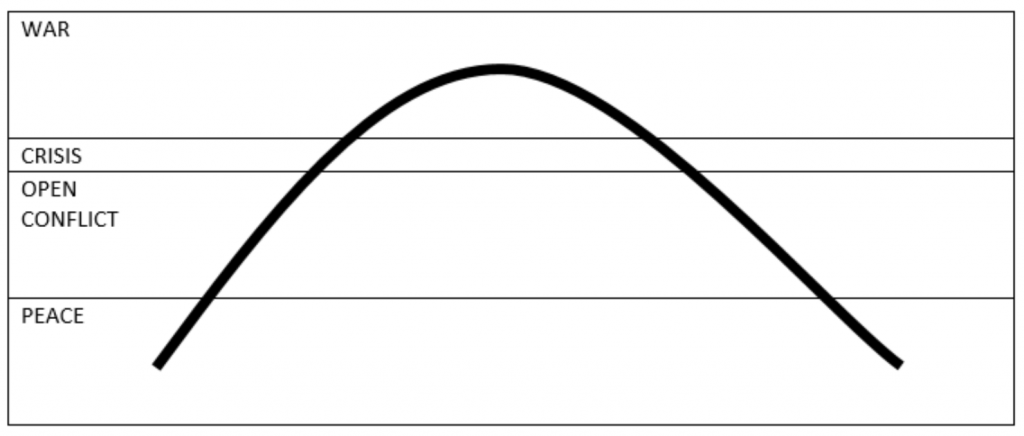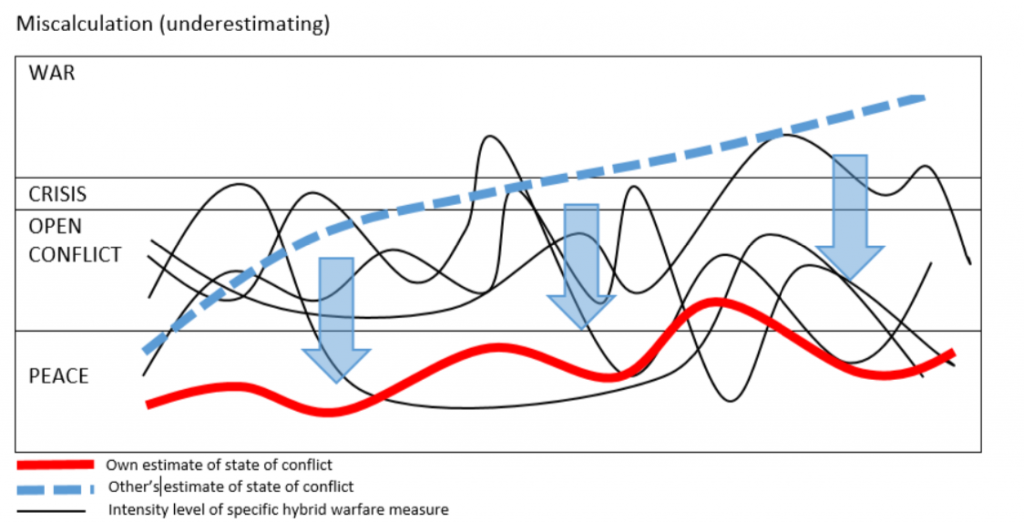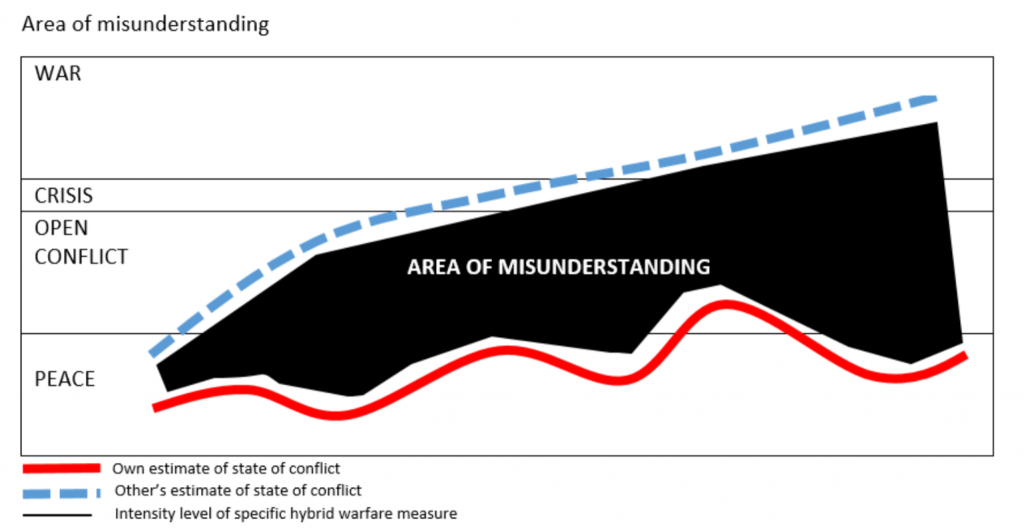Hybrid threats and hybrid wars do not fall within the traditional division between peace and war. Also, hybrid threats do not fit well with traditional conflict stairs or the idea that a conflict moves through different stages in a certain order (Model 1). In the analysis of “Hybrid war and hybrid threats, today and tomorrow: towards an analytical framework”, the author Mikael Weissmann analyzed and performed several stages of the hybrid war.

A conflict scale of today needs to encompass threats that cannot be directly described as regular warfare but still pose a threat to national security in a way other than traditional insurgent and guerrilla warfare do. Furthermore, the warfare is often cloaked in deception, not being open and, if identified, denied (Model 2).
There is also a need for a more complex scale accounting for a range of different hybrid warfare measures taking place simultaneously and at different levels of intensity at each point in time (Model 3).

Furthermore, this should preferably happen without pushing up the intensity of the overarching level of conflict between the adversaries. The figure in Model 4 shows an ideal scenario, where most of the active hybrid warfare that goes on is not adequately identified and successfully attributed (Model 4).
In a less-successful scenario, the accumulated level of hybrid warfare measures risks pushing the overarching relations into a state of open conflict, crisis and war. However, this is a complex process, because, even if there will be confirmed but denied acts of war in a traditional and legal sense, there is not a clear and mutually agreed threshold for war. This leaves a lot to how different active measures and events are interpreted, defined and attributed with meaning. This, of course, is a challenging and problematic task, as deception and deniability are the key features of hybrid warfare, where the focus is on war with other means and the ultimate goal is to win the war without any battle. Hence, as perception and interpretation underlie how the overarching conflict is understood, there is always a serious risk of miscalculations and misunderstanding. This risk of underestimating the adversary’s intentions, thereby underestimating the risks of being slow in one’s preparations and defensive measures whereby one risks losing the war by not knowing the adversary one was preparing for (Model 5).

In the case of hybrid warfare, adversaries must be aware and prepared, as the perception may be wrong. While one adversary may develop positive plans, the other may develop more dangerous strategies (Model 6).
In conclusion, there is an area of misunderstanding between adversaries. Its size is unclear, but it is unlikely that it does not exist. It might be so at a time of stable peace; this will not be the case in times of tensions. Here it is problematic – even dangerous –in that you can never be sure if you are the one over- or underestimating the situation (Model 7).

Source: https://content.sciendo.com/view/journals/jobs/5/1/article-p17.xml


